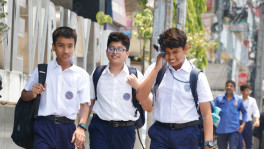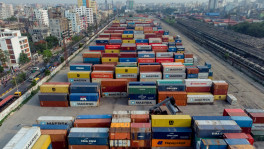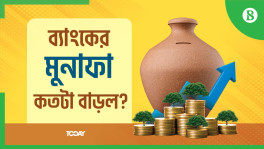The new poor are as real as they get
The phenomenon of the “new poor” is real, pervasive, and ongoing

Estimates of the number of new poor, based mostly on telephone-based surveys, have recently been questioned by many, including the finance minister. Indeed, obtaining unbiased, representative data from phone surveys is a challenge, affecting household and individual-level estimates as well as their blown-up versions at the national level. However, some critics seem to have taken a dismissive position that until better estimates from officially mandated institutions such as the Bangladesh Bureau of Statistics (BBS) are available, the default assumption is poverty has not increased.
Such a position violates the logic of the situation all over the globe due to the pandemic. It is blatantly at odds with an avalanche of anecdotal evidence, not to speak of the survey data. Let us start from projections based on simulations to estimates based on phone surveys.
The simulations anticipated the vulnerabilities
At the international level, A United Nations University-World Institute for Development Economics Research in June 2020 guesstimated the potential impact of the pandemic on poverty incidence and severity in developing countries. They projected as many as 400 million new poor living under the $1.90 a day international extreme poverty line and over 500 million new poor living under the poverty lines of $3.20 and $5.50 a day. The global income shortfall below each poverty line could expand by up to 60%. The location of global poverty may shift towards South Asia, East Asia, and the middle-income countries in general.
They used the World Bank (WB) PovcalNet built-in dataset of harmonised household surveys for 166 developing and advanced economies. This allowed internationally comparable computation of the extent of poverty through well-known indices such as the poverty headcount ratio, the poverty gap, and the squared poverty gap. They used 5%, 10%, and 20% contraction in per capita income or consumption scenarios because of the lockdown. Although apparently arbitrary at first sight, the chosen contractions were closely related to the macroeconomic projections made at that time by the IMF, WB, ADB and OECD.
The WB conducted a micro-simulation using the Household Income and Expenditure Survey 2016/17 to assess the potential impacts of the pandemic on household per capita consumption and poverty rates in 2020 in Bangladesh, compared to a pre-pandemic situation. Poverty is defined based on the official upper poverty line from the BBS. The simulation combined growth and inflation projections for 2020, and additional reductions in labor incomes for daily and informal wage as well as self-employed workers in services and other sectors such as manufacturing, construction, and transport. The national upper poverty rate was projected to rise from 23% before the pandemic to 35%, equivalent to approximately 21 million additional people falling into poverty in 2020. In a more moderate scenario, poverty was projected to rise to 31% nationally, implying 14 million new poor.
Our own Dr Binayak Sen used a similar approach in June 2020 to assess the likely poverty impact of the pandemic under different scenarios with varying plausibility. Two of his scenarios are particularly relevant in hindsight. These are the "reference scenario" in which income for labor drops 80% in urban areas and 20% in rural areas and another modified scenario in which the labor income declines (70%) or less than the reference in urban areas and more (30%) in rural areas. These magnitudes were derived from the trends observed at the time in micro studies as well as high-frequency sales data. The reference scenario projected 16.4 million and the modified scenario 25.4 million new poor.
The surveys unveiled the reality
Binayak's projection in the modified scenario turned out remarkably close to the 24.5 million estimate the Power Participation and Research Center and the Brac Institute of Governance and Development (PPRC-BIGD) survey came up with nine months later! They resurveyed 6099 households over the phone in two rounds in March 2021, constituting 81% of households surveyed earlier in April 2020. The new poor included various informal occupational groups largely but not only in urban locations – mostly rickshaw pullers, drivers, security guards, maids, workers in small and medium businesses, transport, restaurants, private school teachers, and low salaried persons. Due to difficulties in returning to pre-covid occupations and income levels, the new poor appeared at risk of getting stuck in a poverty trap—one year down the crisis, 50% of the new poor were still poor of whom 59% were in urban and 44% in rural areas.
The South Asia Network on Economic Modeling (Sanem) came up with a 42% poverty estimate in 2020 compared with 21.6% in 2018. They collected data over the phone between November-December 2020. The survey was conducted with the household head or other members from the same households who were part of the previous round of the survey in 2018. It followed the same sampling framework of 10,500 households from 500 Primary Sampling Units (PSUs) in 64 districts under 8 divisions. They could reach 5,577 households from 500 PSUs across the same districts and divisions.
The Centre for Policy Dialogues (CPD) found significant income erosion at both individual and household levels. About 45% of households had lower income compared to the pre-pandemic period in both urban and rural areas. The decline in income was somewhat higher for urban households. The CPD surveyed 2,600 households in 16 districts following the Labor Force Survey Framework between late January and early February 2021. In addition, 16 Focus Group Discussions (FGD) were conducted with RMG workers, returnee migrants, retail or sales workers, construction workers, transport workers, MSME entrepreneurs, hotel and restaurant workers, and domestic help to complement the phone survey findings.
A nationwide phone-based survey by the WB in September--November 2020 found substantial labor market impacts of the pandemic through widespread job losses and reduced earnings. Almost one in five economically active individuals experienced either a job loss (5%) or a prolonged absence from work (14%). Among those currently employed, 51% reported a loss in earnings or wages. This WB survey was part of a region-wide effort that found 62% of cases in Nepal, 59% in Sri Lanka, 41% in Afghanistan, and 33% in Bhutan, compared with 56% in Bangladesh, who worked at some point in 2020 but faced a deterioration in their labor market conditions.
These surveys confirmed what the simulations and the early rapid surveys apprehended about the durability of economic distress beyond the lockdowns. The impact, while more severe in the urban areas, extended to the rural areas as well. PPRC-BIGD pioneered the rapid surveys in April 2020 which revealed that beyond the 20.5% of the population officially recognised as poor before the pandemic, an additional 22.9% of the population emerged as the new poor due to the pandemic induced "lockdown". Livelihood uncertainty afflicted 71% of the urban and 55% of rural respondents.
The Bangladesh Institute of Development Studies (BIDS) conducted a phone survey on 30,000 people covering all divisions and districts from 5 May to 29 May, 2020. They found 13% people became unemployed due to the pandemic, 19.2% with income less than Tk5,000 per month reported that their income fell 75%, while 23.3% with income between Tk5000-15000 reported an income contraction of 50% relative to the previous month's income.
The transmission of the economic decline to the rural space happened primarily through the impact of the pandemic on the cottage, micro, and small enterprises as well as reverse migration. A BIDS survey of 375 enterprises and 360 workers, from 26 April to 10 May, 2020 found revenues of rural small entrepreneurs dropped by 67% in 2020 compared to the previous year. Only 16% of SMEs could stay open during the lockdown. PPRC-BIGD's April 2021 survey found 27.3% of urban slum-dwellers migrated back to their rural roots last year, more than one third of whom did not return yet. Suffering from excruciating hunger or risk death from the virus is the real dilemma faced by most informal economy workers.
There were many more surveys at different times, all painting a consistent picture: the economic shock and attendant disruptions to livelihoods during the pandemic were large across a range of populations in most locations.
Yet, the persons in authority ask:
Could these be biased or even false views?
Indeed, phone surveys are more prone to various forms of biases. They naturally require phone ownership leading to coverage bias. Phone survey response rates tend to be lower than face-to-face surveys leading to nonresponse bias. The responding households may be systematically different from households that do not respond. The severity of these biases may vary depending both on the phone survey mode and on the sampling strategy.
What does the evidence say?
A recent WB analysis found phone survey respondents in Ethiopia, Malawi, Nigeria, and Uganda are significantly different from the general adult population in a range of demographic, education, and labor market characteristics. On average, respondent household heads or their spouses are older, more educated, and more likely to own a household enterprise. The differences in means remain statistically significant for most of the outcomes of interest even after recalibrating the household sampling weights to move the estimates for the phone survey respondents closer to those for the general adult population.
While there is remarkable consistency in the direction of the bias across the indicators, it is not inevitable. The bias is always towards households that are better off in terms of consumption expenditures and general living standards. The bias nearly always tends to favor wealthier households. However, coverage bias was not much of a concern in Nigeria, due largely to relatively higher mobile phone penetration compared to Ethiopia, Malawi, and Uganda.
The conclusion: Yes, the phone survey results could indeed be biased. The surveys do not fully reflect the situation of poorer households.
What then can we make of the numbers on the new poor spewing out from various phone-based surveys that may be over-representing the non-poor relative to the extremely poor? The non-poor may be overstating or understating their precarity to the pandemic. The only way to get a better sense is to compare results from surveys not relying on phones with similar phone-based surveys.
The story does not change
An alternative set of survey results, based on face-to-face interviews, confirm what simulations projected and phone surveys observed. The Human Development Research Centre (HDRC) conducted a socio-economic impact assessment of the pandemic on urban poor dwelling in low-income settlements for the government's National Urban Poverty Reduction Program (NUPRP) in collaboration with the UNDP. An estimated 60 million urban poor live in the low-income settlements across different cities and towns of Bangladesh.
This study assessed the new poor phenomena in line with the BBS's Cost of Basic Needs (CBN) method. It used a cross-sectional survey and FGD in 15 City Corporations and Municipalities where baseline survey of NUPRP was complete before the pandemic at the level of both individuals and settlements. Data were collected from 2,135 randomly selected households, half of the number surveyed in the NUPRP 2019 baseline. The data and information collection activities were undertaken between 15 and 28 July 2020.
A key finding from this exercise was more than seven percentage points increase in poverty during the lockdown compared to before lockdown and more than 10 percentage points compared to the baseline. As in the phone-based surveys, it found unprecedented economic distress across "different categories of households (40.1% among the beneficiary households, 38.3% among semi-control households, and 36.6% among pure control households)" due to job loss, truncated salary, lack of business activity, dissaving and distress selling. The study notes:
"At least 2.9 million people in and around the targeted NUPRP cities and towns have become poor who were not poor before COVID-19 lockdown. These people constitute the new category of ''New Poor '' in the low-income settlements in and around the NUPRP targeted 20 cities and towns. This number of new poor can be as high as 3.7 million, and the number may increase if lockdown prolongs and/or if the unemployment situation worsens further."
A reasonably comparable survey of similar low-income urban settlements is available from the WB. The WB is supporting a monitoring survey on a representative sample of households living in poor and slum areas of Dhaka and Chittagong City Corporations and Cox's Bazar district. Their phone survey built on baseline surveys conducted before the pandemic. The first round conducted from 10 June to 10 July, 2020, found widespread income losses across all three areas. In Dhaka and Chittagong, about 80% of wage workers and 94% of business owners reported lower than usual earnings with substantial uncertainty about job prospects.
The bottom line
These numbers, even though representing only the low-income urban settlements, are sufficient to give credence to the hypothesis that the phenomenon of the "new poor" is real, pervasive, and ongoing. The downsides of the phone surveys are not so consequential as to cause a gigantic failure in knowing empirically what to most untrained eyes may be obvious—there currently are many new poor who have joined the ranks of the households who were poor from before the pandemic.


 Keep updated, follow The Business Standard's Google news channel
Keep updated, follow The Business Standard's Google news channel
















